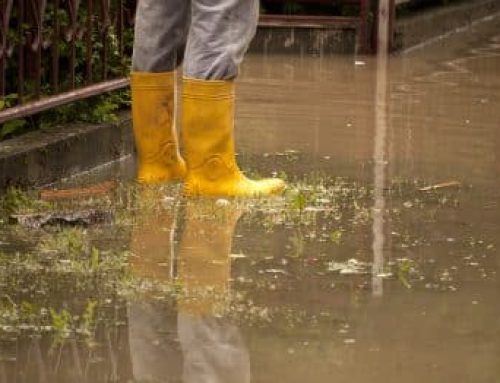As we say goodbye to 2023, property owners across the country are grappling with the aftermath of another intense year in the insurance market. From extreme weather events to large-scale natural disasters, the insurance landscape has evolved significantly. Before diving into 2024, it’s important to consider how the market has reacted to impactful weather events and what investors can learn from it all.
Extreme Weather Events of 2023
Winter
Between February 25th – 28th, Winter Storm Piper wreaked havoc from California to Maine, causing approximately $1.8 billion in total damage. The storm brought heavy snowfall, accumulating over 12 inches in some areas, paired with freezing rain. These extreme conditions led to frozen pipe incidents at properties across the country.
A staggering 466 tornadoes were reported from January to March. According to AccuWeather, this tops the previous high recorded in the first three calendar months since 2017 (398). The Southeast was most affected by tornadoes, specifically Mississippi, Louisiana, Arkansas, and Alabama.
Spring
From April to June 2023, severe and unstable weather plagued southern and central areas of the country. Weather events included tornadoes, hailstorms, heavy rain, and high winds, causing approximately $25 billion in damages.
In June, smoke from Canadian wildfires caused hazardous air quality in the Northeast, eventually spreading to impact areas in the South and West as well.
Summer
Igniting on August 8th, wildfires predominately on the island of Maui, Hawaii caused an estimated $5.5 billion in damages. While a definitive cause remains undetermined, the wildfire was fueled by a combination of high winds, dry brush, and potentially downed power lines. The catastrophic event tragically claimed the lives of over 100 individuals and left more than 2,000 buildings damaged.
On August 16th, Tropical Storm Hilary reached Category 4 intensity, triggering flooding and landslides in California and parts of the Southwest U.S. Resulting damage amounted to nearly $700 million.
On August 26th, another Category 4 storm, Hurricane Idalia, made landfall in the Southeast U.S. The area experienced severe flooding as a result and losses totaling $2.5 billion.
Fall
In late September, Tropical Storm Ophelia made landfall in North Carolina, bringing widespread rainfall, heavy winds, and significant flooding. Regions of New York also experienced significant rainfall and flooding in late September with some areas recording over eight inches of rain.
Winter
November and December brought a comparatively mild winter, with many parts of the country experiencing warmer weather than is typical. While rain and snow were common in many areas, the weather remained relatively non-severe.
Insurance Market Response
In 2023, real estate investors faced significant price hikes with general rate increases and Insurance to Value (ITV) minimum increases. Rising building and material costs continued to be a major concern for insurance companies, driven in part by large-scale natural disasters like wildfires, which impact material availability and the supply chain. Thus, why industry-wide increases have been common in the last few years. NREIG was able to remain steady in those years, but inflation and across the board carrier requirements necessitated rate and ITV minimum increases in 2023.
As we saw beginning in 2022, many insurance companies continued to pull out of areas such as Florida, Louisiana, and California. Unfortunately, some were forced to shut down operations altogether, not only because it was no longer profitable but because there was real concern that one large weather event could cause irreparable financial harm to all parties involved.
Some insurance companies approached challenges by identifying risks they are no longer willing to insure. For example, many carriers now limit or exclude coverage for risks that are more frequent and predictable, such as Aluminum or Knob & Tube Wiring– two electrical systems that pose serious fire hazards. In addition to more exclusionary language, these methods also resulted in higher deductibles.
The good news is the market is beginning to stabilize. The changes and cost increases we saw in 2023 were insurance carriers establishing acceptable rates, deductibles, and coverages that will allow for viable business moving forward. Although costs are expected to continue rising, the rate at which they do is predicted to slow in the coming year. Keep in mind though, significant weather events will always be a driving force that shapes the landscape of the insurance market.
Takeaways For Real Estate Investors
Consult Your Insurance Provider
Engaging in open discussions with your agent or broker is the best way to identify exposure, address concerns, and explore additional insurance products. Your Client Service Advisor is a great resource. Don’t hesitate to reach out if you have questions or need advice!
Choose Appropriate Coverage
As an investor, you must realize that protecting your property and your financial well-being are one and the same. Choosing the appropriate insurance agent/agency, policy coverage, ancillary products, and even coverage amounts can help save you money in the event of a loss.
Evaluate Coverage Amounts
Your monthly or annual expense isn’t always an indication of how “good” the coverage is. For example, some high-end properties aren’t required to be insured at market value. They could be insured effectively at the rebuild value, an amount that is significantly less. Considering the following at each property you own can also help guide coverage decisions:
- How much could you afford to pay out of pocket if there were a loss?
- Are there other structures on the property and are they insured?
- After a large loss, would you make repairs to the home or clear the lot and sell the land?
- Is the property in an area prone to certain types of losses?
Prioritize Maintenance
Regular property inspections and maintenance are crucial in identifying risks or potential losses. Learn what to look for and how to address potential hazards with our checklists and other property maintenance resources.
Avoid Preventable Losses
While we saw many weather-related losses in 2023, a significant number were common and preventable perils. Taking proactive measures to protect your investment properties can significantly reduce the likelihood that you will experience a severe loss and, in turn, help keep insurance costs stable.
2023’s Most Common Insurance Losses
Approximately 3,262 claims were filed with NREIG’s carriers in 2023. See below the five most common causes of loss, the months in which claims submissions spiked, and the U.S. states with the most claims filed.
Most Common Causes of Loss
| Cause of Loss | Number of Claims Filed |
|---|---|
| Wind/Hail | 1,615 |
| Water Damage | 330 |
| Fire | 266 |
| Skip Rent | 260 |
| Theft/Vandalism | 153 |
Months With Highest Number of Claims Submissions
| Month | Number of Claims Filed |
|---|---|
| June | 625 |
| May | 388 |
| July | 314 |
| April | 277 |
| March | 274 |
States With Most Claims Submissions
(Calculated as a percentage of the number of NREIG insured locations in said state)
| State | % of Location That Filed Claims |
|---|---|
| Texas | 15.39% |
| Michigan | 5.27% |
| New Mexico | 4.97% |
| Ohio | 4.37% |
| Oklahoma | 4.19% |
| Missouri | 3.08% |
Wrapping Up 2023
As we reflect on another challenging year in the insurance industry, one thing is clear: the only constant is change. Protecting your real estate investments requires adaptability, foresight, and a trustworthy insurance partner to help you navigate ever-evolving market dynamics. With access to multiple carriers and brokers, NREIG offers diverse insurance products tailored to your unique needs. Our technology and expertise allow us to provide coverage across the U.S., including underserved and vacated areas of the country.
Sources:
https://www.cbsnews.com/news/how-much-of-maui-has-burned-wildfires-aerial-images-acres-containment/
Co-authored by Jason Jones, SVP, Risk Management






